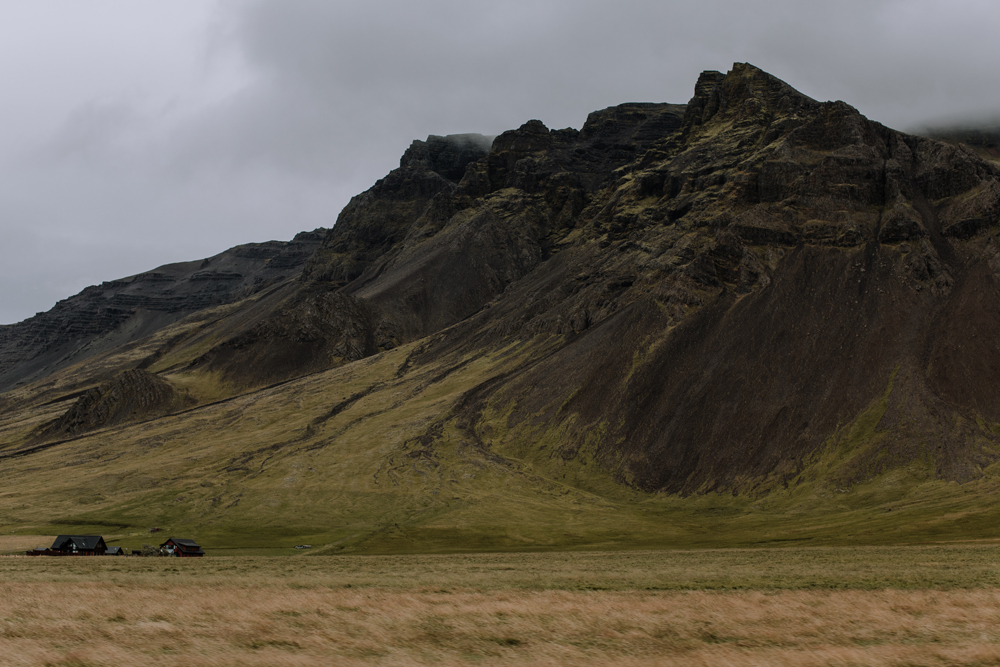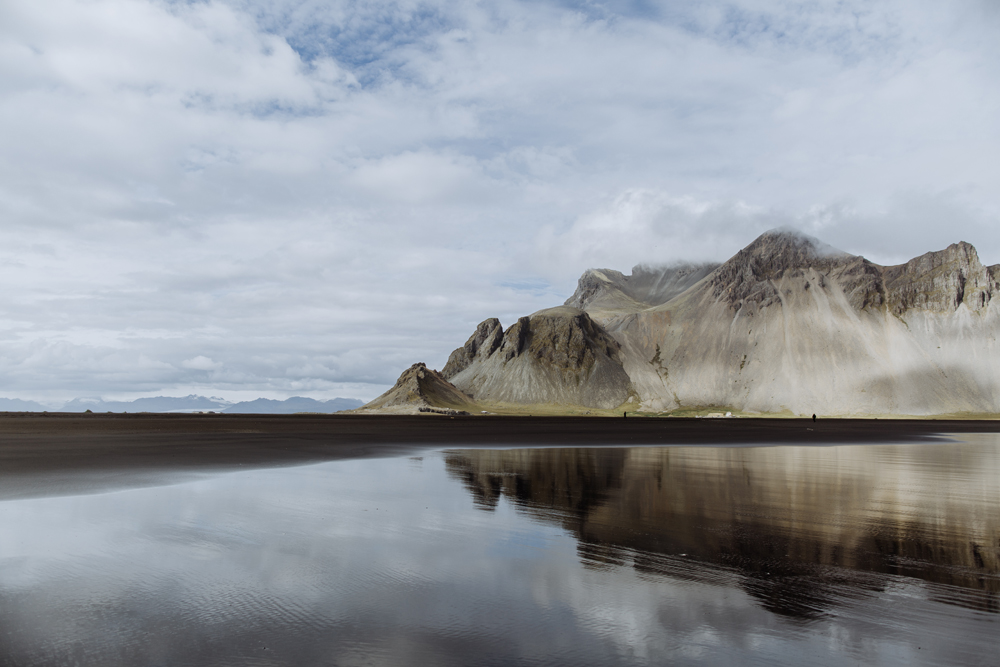Last Updated: February 14th, 2020
A great trip to the Land of Fire & Ice can be made even better with the right Iceland landscape photography lens choices.
As we learned from our own Iceland adventure, you’d be missing out on one of the photographic opportunities of a lifetime if you didn’t bring your camera to this country. Having seen a lot of great images and read great things about the photography opportunities doesn’t do it justice to actually being in the country and realizing this for yourself. The reality of this was pretty clear about 5 minutes into driving our rental car away from the airport and just needing to pull off on the side of the road to take a picture of some random mountain. It’s memorable to us because it was the first of countless stop offs we made just to look at the scenery and snap a few shots.
In our 10 days traveling the entire country, we learned a whole lot. What we want to share with you today is how our camera lens selection influenced the resulting photography we took. We traveled with a camera bag filled with all of the lenses we own, but could have managed to take excellent photos with a more streamlined amount of equipment.
Today, we are going to share with you our recommendations for 5 Iceland landscape photography lenses!
1). Canon EF 16-35mm f/2.8 lens
A powerhouse for wide angle shots, the 16-35mm provides a lot of great opportunities for sweeping landscape photos. At 35mm, this lens can also be used for portrait photography (such as of the beautiful Icelandic horses).
A more affordable option is the Canon EF 16-35mm f/4 Lens. This lens is very similar in quality, but does not have the extra stops of light of the more expensive model. We like the f/2.8 for the ability to let in more light and resulting bokeh when shot wide open, but it’s not an absolute must if actual landscape photography is your primary focus. Generally speaking, you will want to shoot at higher f-stop in order to keep more of the environments in focus anyways, so it’s not hugely detrimental if you want to go this route.
Example Iceland landscape photography image:

2). Canon EF 50mm f/1.2 lens
Next up is Canon’s prime 50mm lens. This is a great lens if you want something lightweight and suitable for portraits in the Icelandic environments, or tighter landscape shots. It does have a few drawbacks (which we cover more in our review), but when it works as expected – the resulting images are great. As a general rule, if we only had one lens to choose from (and it was a single focal length – no zoomable options), we would most likely stick with a 50mm.
Given the $1,000+ dollar price tag, this is admittedly an option for professionals mostly. The quality is definitely better than less expensive options, but we can highly recommend Canon’s ~$100 dollar EF 50mm f/1.8 STM Lens (aka: “the nifty fifty”) if you are on a tight budget. This is a lens that traditionally comes with some of Canon’s more affordable consumer level camera kits, and works surprisingly well.
Example Iceland landscape photography image:

3). Canon EF 70-200mm f/2.8 lens
One of the most powerful zoomable lenses is Canon’s 70-200mm f/2.8. As a lens recommendation for Icelandic landscape photos, it is actually an excellent choice given the distance you will have between you and your landscape subject in some environments. Not to mention, the tighter focal lengths will also allow you to isolate certain aspects of the landscape with ease.
For example, while shooting Godafoss waterfall, we initially began at a wider 24mm composition, but were finding our shots to be less than inspiring. With the 70-200mm, we were able to isolate sections of the waterfall, and in some shots even use tourists standing along the top ridge to reveal scale. Due to the compression at tighter focal lengths, this made for much more interesting shots. In our opinion, this really makes for better Iceland landscape photography opportunities than you might originally think.
For a less expensive option (as in: 3/4 the price), the Canon EF 70-200mm USM f/4 Lens comes in at around $500. We have not personally used this lens ourselves, but based on reviews and user discussions online, it appears to be a solid choice if you are budget conscious. We can’t imagine it quite comparing to the more expensive version – one reason being the lack of built in image stabilization, which significantly benefits the shots taken at the longer focal lengths.
Example Iceland landscape photography image:

4). Canon EF 85mm f/1.2 lens
Okay, so strict landscape photographers need not apply for this lens. However, our approach to landscape photography in general and while we were in Iceland involved portraits as a way to set the stage and showcase the environments.
When you have a specific subject to focus on – be it a person, an animal, or a rubber chicken as we saw some guy photographing at Geysir, it can help to give some context to the location and show scale. When shooting an image like this, this lens really excels. In our experience, shooting between f/1.2 and f/2.8 provides the optimal ability to blur out the background. With Iceland, the array of colors and sights that become the blurred background are powerful and stunning.
As with every lens on this list, there are also more budget friendly options available. The Canon EF 85mm f/1.4 Lens is slightly less expensive and you just lose one stop of light, and the Canon 85mm f/1.8 USM lens is the best budget option with comparisons that can be drawn with the nifty fifty lens we talked about earlier.
Example Iceland landscape photography image:

5). Canon 8-15mm f/4 lens
Lastly, the Canon 8-15mm lens is an ultra-wide angle option. With fish eye distortion, this lens is a favorite among some Icelandic landscape photographers who benefit from contorting a scene. While we traveled through Iceland, we did not have this lens at the time – but in retrospect, we wish we would have.
There is no doubt, this is more of a niche camera lens. The actual need for shots, even landscape photos, taken at 8mm is pretty minimal. Only a few locations would have really called for a great need for this, such as the aforementioned Godafoss waterfall.
Our recommendation of this lens comes loosely from our current experience with it in other contexts. Additionally, we build on this by seeing it’s recommendation by other professional landscape photographers who have journeyed to Iceland and given it as a suggestion, such as Mads Peter Iverson in his Iceland landscape photography video series.
Do you prefer longer or wider focal lengths of Iceland landscape photography lenses?
We have grown accustomed to reaching into our camera bag to swap our lenses. While traveling throughout Iceland, this is not always possible. Especially on days with bad weather, high winds, or while walking around places like the Black Sand Beach.
Given we travel together, our lives are made a little easier by always having 2 cameras on hand. Normally, one loaded with a wider focal length and the other with a tighter option.
Based on our experiences traveling Iceland, we’d be inclined to recommend a 50mm lens if you had to choose just one. It gives the most flexibility, and many of the locations we visited involved large mountains and the like that were quite far away from where we ended up positioned. Alternatively, a zoomable lens would be another preference.
In the scheme of things, our favorite images to look back on were taken with narrow focal lengths (between 50mm – 200mm). Wide lenses absolutely have their place, and for some landscape photographers they are the ultimate go-to lens choices – but for us, we like the types of images we create with longer focal lengths.
Questions?
Hopefully we are able to show you that picking the right Iceland landscape photography lens is not too difficult. Our experiences in this country were stellar, and we are glad to have been able to document it so well with our photos. It’s been 2 years since we visited, but we revisit often in our memories and by looking back at these pictures we took.
If you have any questions about photographing or traveling Iceland, feel free to ask away in the comments below. If you are wondering anything about the lenses we suggested here, also ask away about them, too!
We’re happy to give some input and help you out to make the most of your own Iceland photography adventure!!
Want to know more about traveling Iceland? Check out our other posts:
- How to Pack for a Trip to Iceland
- Breaking Down the Cost to Travel Iceland for 10 Days
- When is the Best Time to Visit Iceland for Photography?